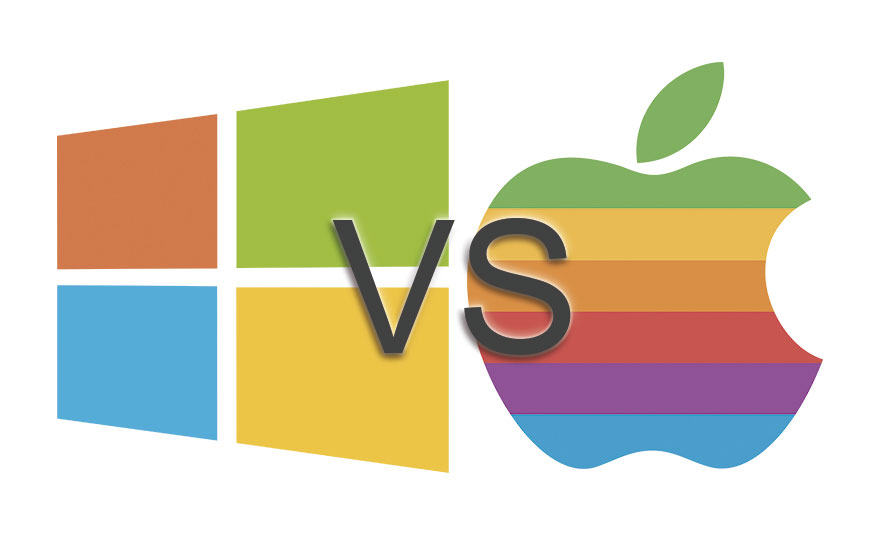
- Mac vs windows for data science how to#
- Mac vs windows for data science install#
- Mac vs windows for data science full#
- Mac vs windows for data science code#
Mac vs windows for data science code#
To do so, copy the code below into the first cell of the notebook. Within your Jupyter notebook, begin by importing the pandas and numpy libraries, two common libraries used for manipulating data, and loading the Titanic data into a pandas DataFrame. If you haven't already opened the file in VS Code, open the hello_ds folder and the Jupyter notebook ( hello.ipynb), by going to File > Open Folder. To begin, download the Titanic data from as a CSV file (download links in the upper right) named data.csv and save it to the hello_ds folder that you created in the previous section.

Mac vs windows for data science how to#
This section shows how to load and manipulate data in your Jupyter notebook. Using this data, the tutorial will establish a model for predicting whether a given passenger would have survived the sinking of the Titanic. The Titanic data provides information about the survival of passengers on the Titanic, as well as characteristics about the passengers such as age and ticket class. This tutorial uses the Titanic dataset available on, which is obtained from Vanderbilt University's Department of Biostatistics at. Now select Select Kernel at the top right of the notebook.Ĭhoose the Python environment you created above in which to run your kernel.

For additional information about native Jupyter notebook support, you can read the Jupyter Notebooks topic. Save the file as hello.ipynb using File > Save As.Īfter your file is created, you should see the open Jupyter notebook in the notebook editor. Note: Alternatively, from the VS Code File Explorer, you can use the New File icon to create a Notebook file named hello.ipynb. Open the Command Palette ( ⇧⌘P (Windows, Linux Ctrl+Shift+P)) and select Jupyter: Create New Blank Jupyter Notebook. Once VS Code launches, create the Jupyter notebook that will be used for the tutorial. Note that you can safely trust opening the folder, since you created it. Open the project folder in VS Code by running VS Code and using the File > Open Folder command. Next, create a folder in a convenient location to serve as your VS Code workspace for the tutorial, name it hello_ds. For additional information about creating and managing Anaconda environments, see the Anaconda documentation. Open an Anaconda command prompt and run conda create -n myenv python=3.7 pandas jupyter seaborn scikit-learn keras tensorflow to create an environment named myenv. In this section, you will create a workspace for the tutorial, create an Anaconda environment with the data science modules needed for the tutorial, and create a Jupyter notebook that you'll use for creating a machine learning model.īegin by creating an Anaconda environment for the data science tutorial. With native support for Jupyter notebooks combined with Anaconda, it's easy to get started. Visual Studio Code and the Python extension provide a great editor for data science scenarios.
Mac vs windows for data science install#
If you go this route, you will need to install the following packages: pandas, jupyter, seaborn, scikit-learn, keras, and tensorflow. Alternatively, if you'd prefer not to use Anaconda or Miniconda, you can create a Python virtual environment and install the packages needed for the tutorial using pip.
Mac vs windows for data science full#
Note: If you already have the full Anaconda distribution installed, you don't need to install Miniconda. Both extensions are published by Microsoft. For additional details on installing extensions, see Extension Marketplace. Note that by default, the Python extension installs the Jupyter extension for you.

The Python extension for VS Code and Jupyter extension for VS Code from the Visual Studio Marketplace. If you do not have them already, install them prior to beginning. The following installations are required for the completion of the tutorial. Specifically, using passenger data from the Titanic, you will learn how to set up a data science environment, import and clean data, create a machine learning model for predicting survival on the Titanic, and evaluate the accuracy of the generated model. This tutorial demonstrates using Visual Studio Code and the Microsoft Python extension with common data science libraries to explore a basic data science scenario.



 0 kommentar(er)
0 kommentar(er)
